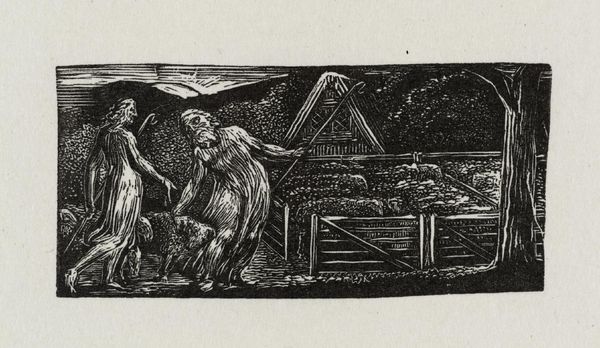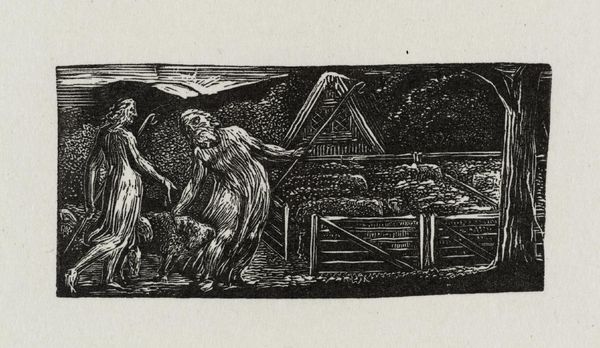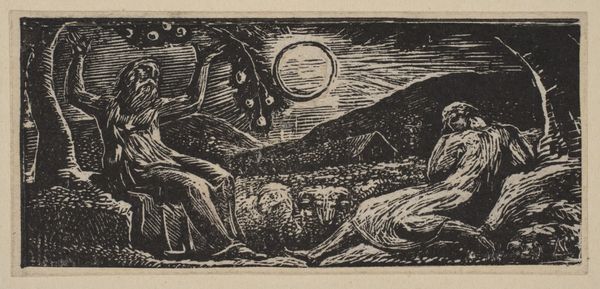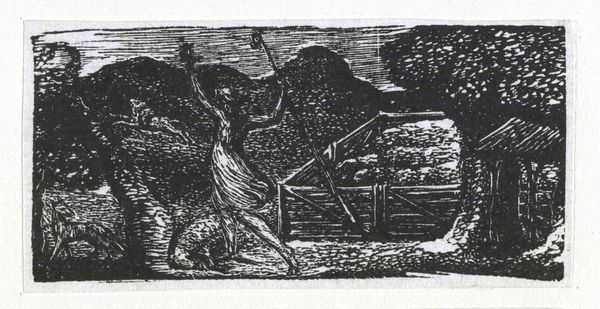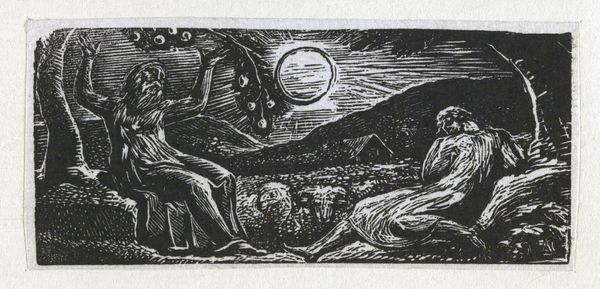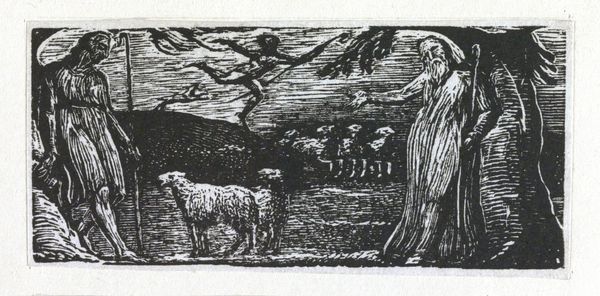
Thenot and Colinet Lead Their Flocks Together, from Thornton's "Pastorals of Virgil" 1821
0:00
0:00
drawing, print, ink, woodblock-print, woodcut
#
drawing
#
narrative-art
#
pen drawing
#
animal
# print
#
landscape
#
figuration
#
ink
#
woodblock-print
#
romanticism
#
woodcut
Dimensions: block: 1 3/8 x 2 15/16 in. (3.5 x 7.5 cm)
Copyright: Public Domain
Editor: Here we have William Blake's woodcut, "Thenot and Colinet Lead Their Flocks Together, from Thornton's 'Pastorals of Virgil'," created in 1821. There's a certain rustic quality to it. The high contrast between the dark and light areas really emphasizes the figures and the landscape, but it all feels a little… stark. What strikes you about it? Curator: The starkness, as you call it, is quite deliberate. Blake is engaging in a dialogue with the pastoral tradition itself, which often romanticizes rural life, obscuring the labor and the social hierarchies inherent in it. This woodcut, originally intended for a children’s book, presents a world that's seemingly simple, but Blake subtly challenges that simplicity. Notice the shepherd’s posture, almost bowed – what does that communicate to you? Editor: It almost seems like a reluctant pose, not quite celebratory. Is Blake maybe commenting on the actual hardships of shepherding, even within a seemingly idyllic scene? Curator: Exactly! Consider also the context of Romanticism. While valuing nature, it also wrestled with industrialization and social upheaval. Blake's sharp contrasts, achieved through the woodcut medium, create a tension – a visual representation of the anxieties surrounding social roles and power structures, and labor division in that time. How does situating it within this social-political context shift your understanding of the piece? Editor: It really does change things. I initially saw a quaint pastoral scene, but now it feels charged with a critique of class and a subtle resistance to idealized rural fantasies. Curator: And perhaps, a questioning of whose story gets told, and how. Art provides these opportunities to dissect history! Editor: I'm beginning to see how seemingly simple art can contain really complex social and historical insights!
Comments
No comments
Be the first to comment and join the conversation on the ultimate creative platform.
